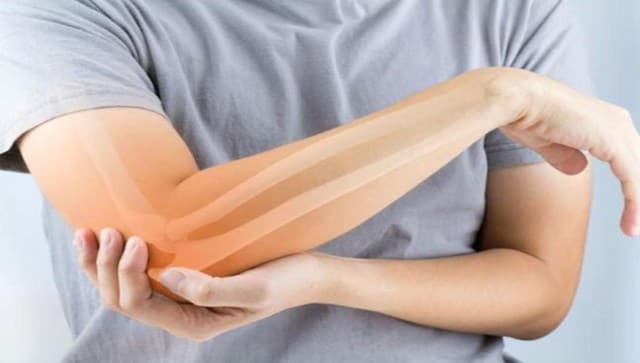Representative image. News 18 Hindi
Osteoporosis literally means “porous bone.” Kitavati means full of holes. As we age, our bones become thinner. Osteoporosis is a disease in which the bones become very weak and brittle. It often develops unnoticed for years without any symptoms or discomfort until a bone breaks. Because there are no symptoms in the early stages and it progresses quietly, it is often called a silent disease.
These fractures most often occur in the hip, spine, and wrist. Bones are often broken by falls, although sometimes people with osteoporosis can break bones even when doing simple household chores, sneezing, or moving suddenly. Fractures caused by osteoporosis can be life-threatening and a major cause of pain and long-term disability.
World Osteoporosis Day (WOD) is celebrated every year on October 20 worldwide to raise awareness of the prevention, diagnosis and treatment of osteoporosis. WOD aims to make osteoporosis and fracture prevention a global public health priority.
What is osteoporosis?
Bone is living tissue. To maintain strength, healthy bones naturally rebuild by removing old bone and replacing it with new bone. Osteoclasts break down old bone and release minerals into the circulation in a process known as bone resorption, while osteoblasts form new bone in a process known as bone ossification or osteogenesis. An imbalance between bone resorption and ossification causes osteoporosis.
In osteoporosis, bone resorption exceeds bone growth. The likelihood of developing osteoporosis depends in part on the peak bone mass reached in youth. Peak bone mass is partially inherited and varies by ethnic group. Peak bone mass is usually reached before the age of 30. The higher the peak bone mass, the more bones a person has “in the bank” and the less likely he is to develop osteoporosis with age.
What are the risk factors?
Osteoporosis is most common in older women, but men are also at risk. One in three women and one in five men over the age of 65 will break a bone due to osteoporosis. In addition to age and gender, the following risk factors for osteoporosis:
• Early menopause
• Underweight (body mass index below 19)
• Diseases associated with osteoporosis, such as rheumatoid arthritis, diabetes, breast or prostate cancer, or certain diseases of the digestive system.
• Medicines that cause osteoporosis, such as daily longer use of glucocorticoids (steroids)
• Hip fracture or osteoporosis in parents
• Sedentary lifestyle
• Smoking and excessive alcohol consumption
• Inadequate dietary intake of calcium and vitamin D
• Previous fracture
• Ethnicity: Caucasian and Asian people are more likely to develop it.
What are the symptoms of osteoporosis?
Although osteoporosis is a silent disease, you should be aware of the following signs and symptoms:
• Loss of height (becoming an inch or more shorter).
• Change in posture (slouching or leaning forward).
• Dyspnea (less lung capacity due to compressed discs).
• Bone fractures.
• Lower back pain.
How is osteoporosis diagnosed?
Bone mineral density (BMD) tests, also known as dual-energy X-ray absorptiometry (DEXA or DXA), are used to diagnose osteoporosis. These X-rays use a very small amount of radiation to determine how hard the bones in your spine, hip, or wrist are.
All women over 65 and all men over 70 should have a bone density test. Women and men who have risk factors for osteoporosis may have a DEXA scan earlier.
How is osteoporosis treated?
The goals of osteoporosis treatment are to slow or stop bone loss and prevent fractures.
• Proper nutrition.
• Change of lifestyle.
• Exercise.
• Preventing falls to prevent fractures.
• Medicines.
Treatment should be individualized and adapted to the needs of each patient.
The author is a Consultant Endocrinologist at Global Hospital, Parel, Mumbai. Opinions expressed are personal.
Read the whole thing Latest news, Trending news, Cricket news, Bollywood news,
News of India and Entertainment news here. Follow us on Facebook, Twitter and Instagram.

